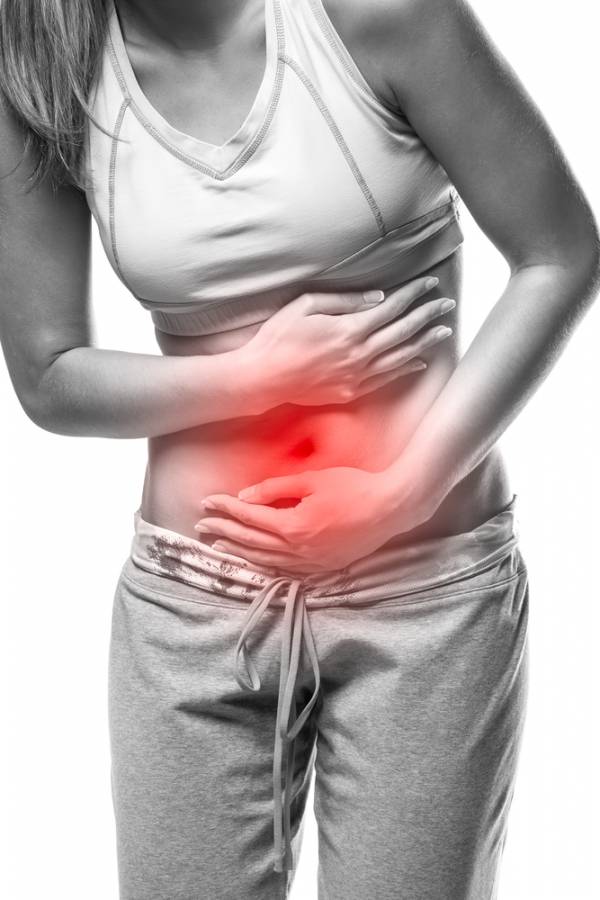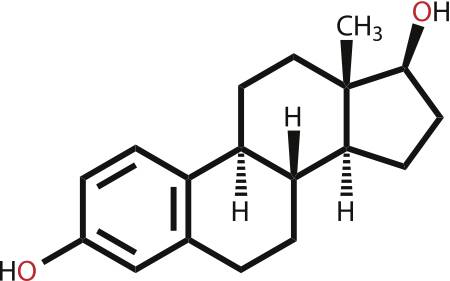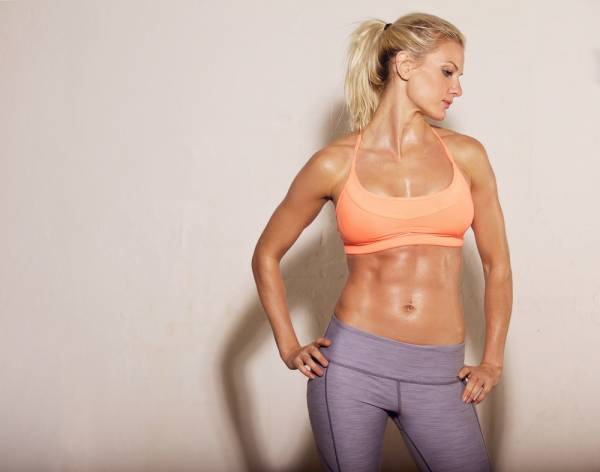So we’ve covered quite a bit on birth control pills – how they might negatively affect your fitness and body composition goals and what non-hormonal birth control alternatives are available to you. But I know there are plenty of women out there who take birth control for reasons other than avoiding unintended pregnancy.
I bet some of you have been on birth control since your teens to treat irregular cycles or acne. Am I right? Problems like hirsutism, irregular cycles, acne, headaches, and ovarian cysts are common reasons for going on birth control. Many doctors and nurse practitioners reach for birth control to fix these common problems is because it’s easy, it’s thought of as safe, and it usually works, because it takes ovulation and your body’s natural production of hormones out of the equation. However, it just might not be the best thing long term for our health or our athletic pursuits and I want you all to be aware that there are other options.
Now, I’m not foolish enough to say that everyone can get off birth control pills, but I think there are some natural or at least better therapies to try if you want to try to kick those synthetic hormones goodbye. If you have endometriosis, cystic ovaries, uterine fibroids, or more serious gynecological problems, some of these natural approaches may very well help, but also know it may not overcome or eliminate your symptoms. Because there are so many ailments that birth control is used to remedy, I am going to focus on the most common problems: menstrual cramping, heavy cycles, and irregular menses.
Menstrual Cramping
 The most common reason for painful menstrual cramping is high levels of prostaglandins, which are messenger-like molecules that are released and work on very specific areas of the body, usually causing muscular contraction and relaxation. The prostaglandin responsible for menstrual cramps is PGF2. PGF2 is produced if fertilization of an egg does not occur. This also signals for the body to stop making progesterone. The influx of PGF2 causes the uterus to contract and start the menstrual flow. Women who have extreme menstrual cramping make much more PGF2 than most women, which causes extreme pain and uterine spasms. This cramping causes inflammation and is believed to also decrease blood flow to the uterine tissue, causing pain much like the pain that occurs during a heart attack when the heart is robbed of blood flow and oxygen.
The most common reason for painful menstrual cramping is high levels of prostaglandins, which are messenger-like molecules that are released and work on very specific areas of the body, usually causing muscular contraction and relaxation. The prostaglandin responsible for menstrual cramps is PGF2. PGF2 is produced if fertilization of an egg does not occur. This also signals for the body to stop making progesterone. The influx of PGF2 causes the uterus to contract and start the menstrual flow. Women who have extreme menstrual cramping make much more PGF2 than most women, which causes extreme pain and uterine spasms. This cramping causes inflammation and is believed to also decrease blood flow to the uterine tissue, causing pain much like the pain that occurs during a heart attack when the heart is robbed of blood flow and oxygen.
Now, that’s all fine and good if you don’t have unbearable cramps, but what the heck are you supposed to do if you are one of those girls with terrible pain at that time of the month? Here are a few ideas:
- Eat an anti-inflammatory diet. Avoiding foods that cause inflammation and elevate prostaglandins is essential. That means avoiding grains, dairy, and sugar. Sounds pretty similar to the advice we often hear in regard to improving tons of other problems right?
- Consider eliminating or limiting eggs and red meat for while. These foods are high in arachidonic acid, which may increase cellular inflammation in some people. Add some omega-3 supplements in the days leading up to and during menses. This can lower inflammation as well.
- Adding some magnesium daily is also a great idea. It can increase muscular relaxation, relieve constipation, and it can help you sleep at night (score!). Take magnesium at night for the best results.
- Take cramp bark and black haw. These herbs are recommended for cramp relief.
Heavy Cycles
Heavy cycles are usually caused by the shedding of a thick endometrial lining. Now, why would the endometrium get so thick? There are many possible reasons but for simplicities sake let’s address the two that always pop into my head first when I think about: too much estrogen and hypothyroidism. First, make sure your doctor checks your thyroid levels. That’s a very easy fix and can improve how you feel in numerous ways including lightening your cycles. Second, consider trying to balance your estrogen levels. When estrogen levels are very high in the body, the cells of the endometrium are stimulated to grow, and grow, and grow.
 What would cause estrogen levels to be so high? Excess body fat for starters. Fat cells produce estrogen. Yikes. When one is heavier, it is very common for cycles to become heavier and sometimes more painful. Also, excessive consumption of foods that contain phytoestrogens (plant-based substances that act like estrogen in the body) and exposure to xenogens (chemicals that act like estrogen in the body) can cause estrogen levels to rise. But some people just tend to produce too much estrogen on their own, especially in early puberty, after the birth of a baby, and during peri-menopause.
What would cause estrogen levels to be so high? Excess body fat for starters. Fat cells produce estrogen. Yikes. When one is heavier, it is very common for cycles to become heavier and sometimes more painful. Also, excessive consumption of foods that contain phytoestrogens (plant-based substances that act like estrogen in the body) and exposure to xenogens (chemicals that act like estrogen in the body) can cause estrogen levels to rise. But some people just tend to produce too much estrogen on their own, especially in early puberty, after the birth of a baby, and during peri-menopause.
- First, manage your weight. If you’re too heavy, then losing weight will definitely help.
- Reduce your exposure to phytoestrogens and xenoestrogens. Examples of phytoestrogens include: soy, sunflower seeds, coffee (in excess), flax, sesame seeds, oats, barley, legumes, yams, rice, alfalfa, beer, bourbon, and many others foods. Don’t worry, you don’t have to completely eliminate coffee, yams, or sunflower seeds but you do need to temper your intake. Xenoestrogens hide out in all kinds of products and trying to tell you everything to avoid would involve more room than I have to elaborate here. Try to keep it simple by: 1) Try to buy organic organic, grass-fed meats and produce when possible as many of the pesticides and drugs our food will mess with your estrogen levels. 2) Avoid eating, drinking, and reheating food in plastic and Styrofoam. 3) Avoid products with phthalates, parabens, and a multitude of other chemicals additives used in nearly allcosmetic products.
- There is a supplement called DIM (diindolylmethane), which is found in cruciferous vegetables like broccoli, which can alter estrogen metabolism for the better. Taking 100-200 mg per day of DIM can decrease the amount of “bad” estrogen and increase the amount of “good” estrogen in the body and alleviate many of the symptoms of estrogen imbalance.
- One may also consider seeing a doctor who specializes in bio-identical hormone replacement. Bio-identical progesterone (not a synthetic) can be helpful in lightening the cycles by inhibiting estrogen from building a thick endometrial lining.
Irregular Cycles
 Young girls just going through puberty, women in peri-menopause, and women who are under a lot of physical and mental stress can all suffer from irregular cycles and it’s normal. Unfortunately, younger girl or women entering menopause are often put on birth control to regulate their cycle because we ladies don’t like our bodies not staying on the schedule we’d prefer. The thing is your cycle isn’t getting regulated. It’s getting shut down altogether. That monthly “period” isn’t a period at all and really isn’t necessary when you’re on the pill, it’s there just to make people feel normal.
Young girls just going through puberty, women in peri-menopause, and women who are under a lot of physical and mental stress can all suffer from irregular cycles and it’s normal. Unfortunately, younger girl or women entering menopause are often put on birth control to regulate their cycle because we ladies don’t like our bodies not staying on the schedule we’d prefer. The thing is your cycle isn’t getting regulated. It’s getting shut down altogether. That monthly “period” isn’t a period at all and really isn’t necessary when you’re on the pill, it’s there just to make people feel normal.
So, the first thing I think we need to do is forget being “normal.” Not everyone’s cycle is going to be exactly 28 days long and some months it may not be perfectly in line with when it’s “supposed” to come. However, if you really want to try to regulate the cycle as much as possible, many of the same recommendations given for heavy cycles apply here.
- Check your thyroid if your cycles are chronically irregular.
- Lose excess fat and eat a low sugar, anti-inflammatory diet if you are heavy, as this will improve your insulin sensitivity and improve polycystic ovary syndrome symptoms, which may be an underlying cause of irregular cycles.
- Lower stress levels and take it easy on your workouts if you’re overdoing it a bit. Your body will not ovulate if you are too lean or if the physical or emotional stress you are under are so much that having a child would be too much for the body to handle.
Of course, this is not a complete list of all the problems birth control is used to treat, but I think we covered the major ones. I hope some of you now know that you do have options to treat your symptoms. And remember, eating well, losing weight, de-stressing, and basically taking care of yourself go a really long way in improving every part of your life and health – including your cycle.
Photos courtesy of Shutterstock.






